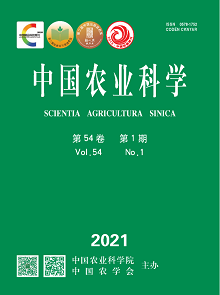【Objective】The aim of this study was to clarify effects of elevated temperature and CO2 concentration on the photosynthetic characteristics of maize under intercropping with peanut, so as to provide the theoretical basis for the green high-yield and high-efficient cultivation of maize intercropping peanut (maize||peanut) under the condition of climate change in the future.【Method】In this study, maize intercropping peanut 2﹕4 pattern was taken as the research object. In 2018, ambient temperature ambient CO2 concentration (TC) and elevated temperature and CO2 (+T+C) were set up in the experiment, and elevated temperature ambient CO2(+TC) was added in 2019 to conduct the experiment, under two phosphorus levels of P0 (0) and P180 (180 kg P2O5·hm-2), respectively. The effects of elevated temperature and CO2 on photosynthetic pigment content, SPAD value, and photosynthetic response curves to light intensity and CO2 concentration and the related parameters of intercropped maize were studied.【Result】 (1) Compared with TC, +TC increased the content of chlorophyll b and chlorophyll a+b of intercropping maize at 34 days after seedlings, while this treatment reduced the chlorophyll a/b value. Under the condition of phosphorus application at 55 days after seedling, SPAD value, AQY, CE, Amax, Vc,max, Jmax, and TPU of maize were increased by 7.80%, 18.18%, 18.86%, 13.34%, 13.33%, and 20.14%, respectively, and maize grain yield increased by 19.2% to 28.1%. Compared with +TC, +T+C improved the AQY, but reduced LCP of intercropping maize at 55 and 65 days after seedling; The CE, Amax, Vc,max, Jmax, and TPU of intercropping maize were increased by 13.58%-32.96%, 21.31%-11.61%, 9.35%-14.5%, 9.52%-15.13% and 8.82%-26.16% at 55 days after seedling, respectively; The yield were increased by 5.25%-18.70%. All reached significant difference levels (P<0.05). (2) Compared with TC, +T+C increased the SPAD value of intercropping maize at big bell mouth and filling stages, which were increased by 4.68%-12.91% and 7.88%-18.37%, respectively, while decreased by 8.63%-12.72% at dough stage; chlorophyll a, b, and a+b of intercropping maize increased by 17.58%-19.54%, 52.55%-59.55%, and 26.08%-28.47%, respectively, at 35 days after seedlings; chlorophyll a/b were decreased by 23.04%-25.18%; AQY and LSPn were increased by 30.30%-75.76% and 16.87%-19.44%, respectively, at 55 days after seedlings; CE, Amax, Vc,max, Jmax and TPU increased by 15.72%-36.78%, 24.91%-32.66%, 20.77%-29.83%, 20.93%-30.48%, and 27.16%-30.74%, respectively; The yield increased by 7.24%-52.0%. All reached significant difference levels. (3) Compared with no phosphorus application, phosphorus application increased the content of chlorophyll b of intercropping maize under TC, +TC and +T+C by 24.15%, 18.64% and 22.04%, respectively, at 85 days after seedling; LSPn was increased by 13.30%, 17.0% and 9.86%, respectively, at 34 days after seedling; and the yield was increased by 24.2%-67.2%, 55.6% and 27.8%-38.0%, respectively. All reached significant difference levels. 【Conclusion】 Elevated temperature or elevated temperature and CO2 could increase chlorophyll content and net photosynthetic rate of intercropping maize at early growth stage, showing a positive synergy, while elevated CO2 could alleviate the negative effects of elevated temperature at the middle and late growth stage. Elevated temperature and CO2 could increase the yield of intercropping maize, the key lies in the improvement of chlorophyll content, carboxylation efficiency, maximum electron transfer rate and triose phosphate utilization rate at the early and middle growth stage. The supply of phosphorus had an obvious positive effect.









